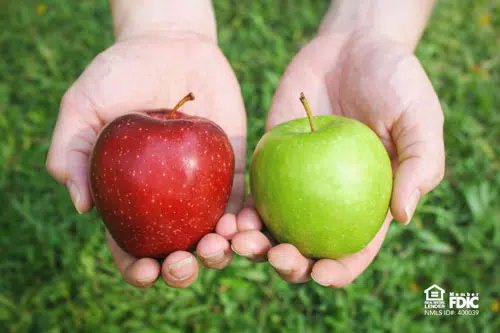A checking account is one of the most basic banking services. Checking accounts is relatively simple to open by either going to a bank or credit union’s website or visiting a branch location. Several types of checking accounts are available, offering different features and options. The goal is to find a checking account that meets your banking needs.
Where to Open Your Checking Account
Many people will open a checking account with the bank they already do business with. Others choose banks that have locations close to their work or home for convenience. However, when you open a checking account, you should look for financial institutions that fit your needs. If depositing and withdrawing cash is on your must-have list, a financial institution that makes it easy and convenient for these services should play into your decision.
The internet and mobile apps have made it easier than ever to open a checking account with a financial institution that may not be in your area or is considered online-only. Compare and shop around to find the most suitable place for you.
What Factors to look for in a Checking Account
There are several factors that you should take into consideration when looking for a checking account. Some of these factors may be weighted more heavily than others. It depends on how you use your checking account and what’s more important to you. Here are some factors that you should consider in your decision:
ATM access/fees – Some financial institutions charge a fee if you access your money through an ATM not part of your bank or credit union’s network. This fee ranges and can be as much as a few dollars each time you use it. Some financial institutions will reimburse you for these charges or allow you to make a certain amount of monthly ATM transactions.
Account minimums—A financial institution may require you to keep a minimum balance in your account at all times. The minimum can vary depending on the type of checking account you open, and it can be anything from a dollar to a few thousand dollars. You may be charged a fee if your balance falls below the minimum.
Overdrafts – Writing a check is almost a thing of the past, and so are bounced checks. However, with debit cards being used more often for everyday transactions, there are situations where you may overdraw your account.
If you enroll in overdraft services, you can complete a transaction even when you don’t have the funds to pay for it. In return, you will be charged an overdraft fee. These fees can add up, so it's best not to overdraw your account continuously. Check with the financial institution to find out what it would cost you to use overdraft services.
Branch access – The number of branch locations with financial institutions has been shrinking over the last several years. This is due to the convenience and features of online banking and mobile apps to complete everyday transactions. If you prefer banking at a branch, review their locations to ensure the institution fits your needs.
Earning interest—Some checking accounts allow you to earn interest or cashback on purchases made through your debit card. These accounts may have a minimum or maximum balance requirement, and interest rates will vary.
Eligibility and special needs—To open a checking account, you typically need to be at least 18 years old without needing a parent to co-sign. You may also need to be a U.S. citizen or permanent resident and show proof of this. If you are a student, look for financial institutions that offer student checking accounts. These accounts typically have lower or no fees and other features that make them friendlier for students.
NASB offers a range of checking accounts to fit your lifestyle. Open a checking account or call 800-677-6272 to learn more.




